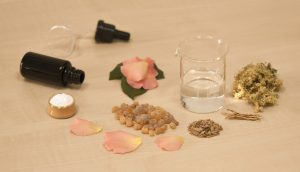
Last week I discussed diffusing essential oils on my homepage. I described eight specific benefits of dispersing these secondary metabolites into the air. I also provided resources for creating your own blends of pleasing scents. You can read about these far reaching effects, which include stress relief, air purification, and health promotion, and grab the recipes by clicking here.
In this blog, I’ll continue the diffuser discussion. Below I give more information on the “How-tos” and some creative ways to diffuse so the whole family can take advantage of enticing aromas. Not only will the environment smell more pleasant, but it is a non-toxic and safe way to enhance everyone’s wellness.
The How-Tos
1. Selecting a Diffuser
I strongly urge that you only use a cold air diffuser. I advise against burning essential oils with a candle or exposing these precious compounds to excessive heat, light, or oxygen. These factors can damage the oils’ properties and decrease wellness benefits in two major ways.
First, as many of my readers and seasoned oilers know, choosing a properly distilled oil, which uses steam distillation and low temperatures, is paramount in extracting the therapeutic constituents and leaving them intact. We don’t want to spend the extra money for quality essential oils and then destroy them after we get them home, right?
Second, these factors also influence storage of essential oils. I go into greater detail on essential oils shelf life in an upcoming blog.
So, what cold air diffuser should you choose?
There’s several I like:
These larger cool mist diffusers from Amazon can last anywhere from 8 hours to 16 hours. One I just bought was going strong for almost a full day! I advise every large home to have one of these running. (No affiliation here.)
Click here to learn about atomizers.
Bottom Line:
As long as your diffuser ensures “cold air diffusion,” you should be okay. I can only speak of the two options above that I have experience with.
2. An Option for the Creative: Creating a “Stationary Diffuser Haven.”
I didn’t coin the term, but isn’t it intriguing?
Below is a Facebook post by Cole Woolley, PhD, essential oils researcher. He provides some great tips on dispersing essential oils all throughout our homes and a little bit of the biochemistry on how it works.
Post by Cole Woolley, PhD – Exploring Essential Oils
Stationary Diffusers – Kitchen
I love discovering stationary diffusers. Stationary diffusers are furnishings – objects that do not move. Today’s post deals with stationary diffusers in the kitchen. The KITCHEN generates great aromas, but also foul odors.
Dr. Woolley’s Kitchen Diffusers*******************************
Here’s my list of stationary diffusers in my kitchen:
1. Small throw rug (one of my favorite places for any oil I want)
2. Bar soap (I use geranium oil as it leave a lingering floral aroma)
3. Kitchen sink
4. Dish scrubber (I like lemon oil as it also helps cut grease and leaves a great aroma)
5. Garbage can (place a drop in the bottom after taking out garbage)
6. Ceramic floor tiles
7. Flower decorations (artificial, wooden, or real dry flowers)
8. Wooden balls, beach sand, or beach shells in a bowl
9. Wooden sculpture (wood is great at absorbing and emitting essential oil molecules)
10. Garbage disposal (I use lemon oil here too, sometimes a drop of juniper or cedarwood)
11. Paper towel (I place a drop of peppermint on the edge of the roll)
12. Folded paper napkin (I love a drop of orange oil in the air after dishes are washed)
13. Unscented and unlit candle (a favorite of mine)
14. The lid of canned food (great diffuser surface) (Me- BPA-free cans please!)
15. Ceramic tile decoration (place a drop of tangerine oil on the back)
…
Monoterpenes and Sesquiterpenes*********************
When you place a drop of essential oil on a stationary diffuser, the molecules escape into the air based on their evaporation rate. Monoterpenes and Oxygenated Monoterpenes, the smallest molecules, contain 10 Carbon atoms. These molecules readily evaporate from the surface of stationary diffusers.
The larger Sesquiterpene and Oxygenated Sesquiterpene molecules contain 15 Carbon atoms. These larger molecules have lower evaporation rates so they prefer to stay from the surface of stationary diffusers.
The temperature of the stationary furnishing also affects the evaporation rate of the essential oil molecules. The higher the temperature the faster the evaporation rate of the molecules.
…
-Dr. Cole Woolley, the essential oil explorer
How Long to Diffuse?
I diffuse continuously myself. There are some that will say it is best to take a few hours off a day to recalibrate your odorant receptors or to change oils. I haven’t seen studies on this, or have experienced this.
I think that this theory may be linked to a possibility of tolerance or the potential of saturating our smell receptors. I’ve already written about these factors here and believe most sensitization seems to occur via topical application, if it does occur at all..
Here’s my opinion and experience, as the data is lacking:
I feel that essential oil diffusing, especially if mold or environmental concerns are present, is a must throughout the day. I do suggest slight breaks and alternating essential oils periodically.
I find diffusing to be an easy and appealing way to gain the benefits of essential oils as we purify our environment.
Here’s to a more pleasant smelling and healthier home!
Disclaimer: This information is applicable ONLY for therapeutic quality essential oils. This information DOES NOT apply to essential oils that have not been tested for purity and standardized constituents. There is no quality control in the United States, and oils labeled as “100% pure” need only to contain 5% of the actual oil. The rest of the bottle can be filled with fillers and sometimes toxic ingredients that can irritate the skin.
This material is for information purposes only and is not intended to diagnose, treat, or prescribe for any illness. You should check with your doctor regarding implementing any new strategies into your wellness regime. These statements have not been evaluated by the FDA. (Affiliation link.)




1 Comment